 W
WThe Battle of Midway was a major naval battle in the Pacific Theater of World War II that took place on 4–7 June 1942, six months after Japan's attack on Pearl Harbor and one month after the Battle of the Coral Sea. The U.S. Navy under Admirals Chester W. Nimitz, Frank J. Fletcher, and Raymond A. Spruance defeated an attacking fleet of the Imperial Japanese Navy under Admirals Isoroku Yamamoto, Chūichi Nagumo, and Nobutake Kondō near Midway Atoll, inflicting devastating damage on the Japanese fleet that rendered their aircraft carriers irreparable. Military historian John Keegan called it "the most stunning and decisive blow in the history of naval warfare", while naval historian Craig Symonds called it "one of the most consequential naval engagements in world history, ranking alongside Salamis, Trafalgar, and Tsushima Strait, as both tactically decisive and strategically influential".
 W
WAkagi was an aircraft carrier built for the Imperial Japanese Navy (IJN), named after Mount Akagi in present-day Gunma Prefecture. Though she was laid down as an Amagi-class battlecruiser, Akagi was converted to an aircraft carrier while still under construction to comply with the terms of the Washington Naval Treaty. The ship was rebuilt from 1935 to 1938 with her original three flight decks consolidated into a single enlarged flight deck and an island superstructure. The second Japanese aircraft carrier to enter service, and the first large or "fleet" carrier, Akagi and the related Kaga figured prominently in the development of the IJN's new carrier striking force doctrine that grouped carriers together, concentrating their air power. This doctrine enabled Japan to attain its strategic goals during the early stages of the Pacific War from December 1941 until mid-1942.
 W
WTaijiro Aoki was a career officer in the Imperial Japanese Navy during World War II. Aoki graduated from the 41st class of Naval Academy at Etajima in December 1913, ranking 90 out of 118 Cadets. His classmates included Ryūnosuke Kusaka, Masatomi Kimura and Raizō Tanaka. Aoki was promoted to captain in 1937, and was made commander of the seaplane tender Mizuho. He subsequently served as commandant of the naval aviation training schools at Yokosuka and Tsuchiura.
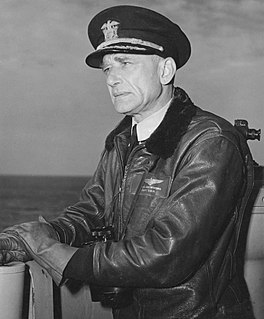 W
WMiles Rutherford Browning was an officer in the United States Navy in the Atlantic during World War I and in the Pacific during World War II. A pioneer in the development of aircraft carrier combat operations concepts, he is noted for his aggressive aerial warfare tactics as a captain on the USS Enterprise during World War II. His citation for the Distinguished Service Medal states: "His judicious planning and brilliant execution was largely responsible for the rout of the enemy Japanese fleet in the Battle of Midway."
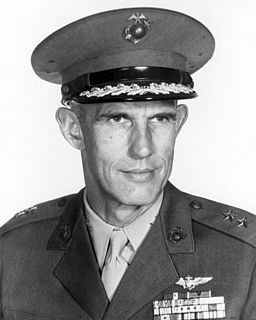 W
WMajor General Marion Eugene Carl was a World War II fighter ace, record-setting test pilot, and Naval Aviator. He was the United States Marine Corps' first ace in World War II.
 W
WUSS Enterprise (CV-6) was a Yorktown-class carrier built for the United States Navy during the 1930s. She was the seventh U.S. Navy vessel of that name. Colloquially called "The Big E", she was the sixth aircraft carrier of the United States Navy. Launched in 1936, she was one of only three American carriers commissioned before World War II to survive the war. She participated in more major actions of the war against Japan than any other United States ship. These actions included the attack on Pearl Harbor — 18 Douglas SBD Dauntless dive bombers of her Air Group arrived over the harbor during the attack; seven were shot down with eight airmen killed and two wounded, making her the only American aircraft carrier with men at Pearl Harbor during the attack and the first to sustain casualties during the Pacific War — the Battle of Midway, the Battle of the Eastern Solomons, the Battle of the Santa Cruz Islands, various other air-sea engagements during the Guadalcanal Campaign, the Battle of the Philippine Sea, and the Battle of Leyte Gulf. Enterprise earned 20 battle stars, the most for any U.S. warship in World War II, and was the most decorated U.S. ship of World War II. She was also the first American ship to sink a full-sized enemy warship after the Pacific War had been declared when her aircraft sank the Japanese submarine I-70 on 10 December 1941. On three occasions during the war, the Japanese announced that she had been sunk in battle, inspiring her nickname "The Grey Ghost". By the end of the war, her planes and guns had downed 911 enemy planes, sunk 71 ships, and damaged or destroyed 192 more.
 W
WThe First Bombardment of Midway, or the First Bombardment of Sand Island, or Attack on Midway, was a small land and sea engagement of World War II. It occurred on the very first day of the Pacific War, 7 December 1941, not long after the major attack on Pearl Harbor. Two Imperial Japanese destroyers bombarded Sand Island of Midway Atoll. The Japanese successfully damaged the U.S. Marine base before being engaged by American shore batteries and forced to flee.
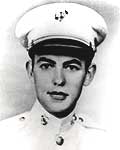 W
WCaptain Richard Eugene Fleming was a United States Marine who received the Medal of Honor for his heroism in World War II during the Battle of Midway. Fleming piloted a Vought SB2U Vindicator dive bomber in an attack on the Japanese cruiser Mikuma.
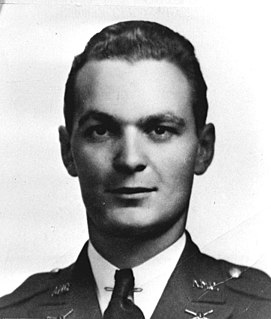 W
WEnsign George Henry Gay Jr. was a Douglas TBD Devastator pilot in United States Navy Torpedo Squadron 8 operating from the aircraft carrier USS Hornet in the Pacific Theater of Operations during World War II. Of the 30 VT-8 aircrew from Hornet that participated in the pivotal Battle of Midway, Ensign Gay was the sole survivor.
 W
WHagikaze (萩風, Clover Wind) was one of 19 Kagerō-class destroyers built for the Imperial Japanese Navy during the 1930s.
 W
WWilliam Frederick Halsey Jr. was a fleet admiral in the United States Navy during World War II. He is one of four individuals to have attained the rank of fleet admiral of the United States Navy, the others being Ernest King, William Leahy, and Chester W. Nimitz.
 W
WUSS Hammann (DD-412) was a World War II-era Sims-class destroyer in the service of the United States Navy, named after Ensign Charles Hammann, a Medal of Honor recipient from World War I. Hammann was sunk during the Battle of Midway, trying to assist the sinking aircraft carrier USS Yorktown.
 W
WLofton Russell Henderson was a United States Marine Corps aviator during World War II. He commanded Marine Scout Bombing Squadron 241 (VMSB-241) at the Battle of Midway and died while leading his squadron to attack the Japanese carrier forces.
 W
WHiryū was an aircraft carrier built for the Imperial Japanese Navy (IJN) during the 1930s. Generally regarded as the only ship of her class, she was built to a modified Sōryū design. Her aircraft supported the Japanese invasion of French Indochina in mid-1940. She took part in the attack on Pearl Harbor and the Battle of Wake Island. During the first few months of the Pacific War, the ship supported the conquest of the Dutch East Indies in January 1942. The following month, her aircraft bombed Darwin, Australia, and continued to assist in the Dutch East Indies campaign. In April, Hiryū's aircraft helped sink two British heavy cruisers and several merchant ships during the Indian Ocean Raid.
 W
WUSS Hornet (CV-8), the seventh U.S. Navy vessel of that name, was a Yorktown-class aircraft carrier of the United States Navy. During World War II in the Pacific Theater, she launched the Doolittle Raid on Tokyo and participated in the Battle of Midway and the Buin-Faisi-Tonolai Raid. In the Solomon Islands campaign, she was involved in the capture and defense of Guadalcanal and the Battle of the Santa Cruz Islands where she was irreparably damaged by enemy torpedo and dive bombers. Faced with an approaching Japanese surface force, Hornet was abandoned and later torpedoed and sunk by approaching Japanese destroyers. Hornet was in service for a year and six days and was the last US fleet carrier ever sunk by enemy fire. For these actions, she was awarded four service stars, a citation for the Doolittle Raid in 1942, and her Torpedo Squadron 8 received a Presidential Unit Citation for extraordinary heroism for the Battle of Midway. Her wreck was located in late January 2019 near the Solomon Islands.
 W
WI-121, laid down in 1924 as Submarine No. 48 and known as I-21 from November 1924 to June 1938, was an I-121-class submarine of the Imperial Japanese Navy that served during the Second Sino-Japanese War and World War II. During the latter conflict, she conducted operations in support of the Japanese invasion of Malaya, the Japanese invasion of the Philippines, the bombing of Darwin, the Battle of Midway, the Guadalcanal campaign, the Battle of the Eastern Solomons, and the New Guinea campaign. She surrendered at the end of the war in 1945 and was scuttled in 1946.
 W
WThe Japanese submarine I-158 was a Kaidai-class cruiser submarine of the KD3A sub-class built for the Imperial Japanese Navy (IJN) during the 1920s. She supported Japanese forces during the invasion of Malaya in December 1941 and was instrumental in tracking Force Z, the two British capital ships that attempted to intercept the Japanese invasion forces, so they could be sunk by torpedo bombers.
 W
WThe Japanese submarine I-165 was a Kaidai type of cruiser submarine active in World War II. A KD5 sub-class boat, I-165 was built for the Imperial Japanese Navy (IJN) during the early 1930s.
 W
WThe Japanese submarine I-168 was a Kaidai type of cruiser submarine active in World War II. A KD6 sub-class boat, I-168 was built for the Imperial Japanese Navy (IJN) in the early 1930s. At the Battle of Midway she sank the only American warships lost in the battle: the aircraft carrier USS Yorktown and the destroyer USS Hammann. At that time she was commanded by Lieutenant Commander Yahachi Tanabe.
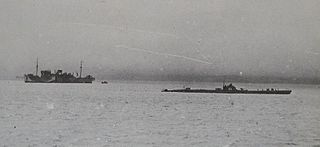 W
WI-71, later I-171, was a Kaidai-class cruiser submarine of the KD6 sub-class built for the Imperial Japanese Navy during the 1930s. She served in World War II, and took part in operations supporting the attack on Pearl Harbor, the Battle of Midway, and the Aleutian Islands campaign. She was sunk in February 1944.
 W
WKaga (加賀) was an aircraft carrier built for the Imperial Japanese Navy (IJN) and was named after the former Kaga Province in present-day Ishikawa Prefecture. Originally intended to be one of two Tosa-class battleships, Kaga was converted under the terms of the Washington Naval Treaty to an aircraft carrier as the replacement for the battlecruiser Amagi, which had been irreparably damaged during the 1923 Great Kantō earthquake. Kaga was rebuilt in 1933–1935, increasing her top speed, improving her exhaust systems, and adapting her flight decks to more modern, heavier aircraft.
 W
WIra Laffayete Kimes was a highly decorated naval aviator of the United States Marine Corps with the rank of brigadier general. He is most noted for his service as commanding officer of Marine Aircraft Group 22 during the Battle of Midway, for which he received the Navy Distinguished Service Medal.
 W
WRear Admiral Clarence Wade McClusky, Jr., was a United States Navy aviator during World War II and the early Cold War period. He is credited with playing a major part in the Battle of Midway. In the words of Admiral Chester Nimitz, McClusky's decision to continue the search for the enemy and his judgment as to where the enemy might be found, "decided the fate of our carrier task force and our forces at Midway".
 W
WArchie Edward O'Neil was an officer in the United States Marine Corps with the rank of Brigadier general. He is most noted for his service as Commanding officer, 9th Defense Battalion during the Recapture of Guam in July 1944.
 W
WUSS O'Flaherty (DE-340) was a John C. Butler-class destroyer escort built for the United States Navy during World War II. She was named for Ensign Frank Woodrow O'Flaherty, a pilot who posthumously received the Navy Cross for his actions at the Battle of Midway.
 W
WAdmiral DeWitt Clinton Ramsey was a U.S. Navy officer and pioneer naval aviator who served as an aircraft carrier commander during World War II. His postwar assignments included command of the U.S. Pacific Fleet and service as Chief of the Bureau of Aeronautics (BuAer) in the Navy Department and as Vice Chief of Naval Operations.
 W
WUSS Russell (DD-414) was a World War II-era Sims-class destroyer in the service of the United States Navy, named after Rear Admiral John Henry Russell.
 W
WShattered Sword: The Untold Story of the Battle of Midway is a 2005 book dealing with the battle of Midway in June 1942.
 W
WSōryū was an aircraft carrier built for the Imperial Japanese Navy (IJN) during the mid-1930s. A sister ship, Hiryū, was intended to follow Sōryū, but Hiryū's design was heavily modified and she is often considered to be a separate class. Sōryū's aircraft were employed in operations during the Second Sino-Japanese War in the late 1930s and supported the Japanese invasion of French Indochina in mid-1940. During the first months of the Pacific War, she took part in the attack on Pearl Harbor, the Battle of Wake Island, and supported the conquest of the Dutch East Indies. In February 1942, her aircraft bombed Darwin, Australia, and she continued on to assist in the Dutch East Indies campaign. In April, Sōryū's aircraft helped sink two British heavy cruisers and several merchant ships during the Indian Ocean raid.
 W
WTanikaze (谷風, Valley Wind) was one of 19 Kagerō-class destroyers built for the Imperial Japanese Navy during the 1930s.
 W
WJohn Smith Thach was a World War II Naval Aviator, air combat tactician, and United States Navy admiral. Thach developed the Thach Weave, a combat flight formation which could counter enemy fighters of superior performance, and later the big blue blanket, an aerial defense against kamikaze attacks.
 W
WThe World War II Facilities at Midway were built as part of the fortification leading up to World War II. The Midway Atoll's unique location halfway between the United States and Japan ensured it would hold a strategic position. This island was the site of the pivotal Battle of Midway which shifted the balance of sea power in the Pacific towards the United States.
 W
WIsoroku Yamamoto was a Japanese Marshal Admiral of the Imperial Japanese Navy (IJN) and the commander-in-chief of the Combined Fleet during World War II until his death.
 W
WUSS Yorktown (CV-5) was an aircraft carrier that served in the United States Navy during World War II. Named after the Battle of Yorktown in 1781, she was commissioned in 1937. Yorktown was the lead ship of the Yorktown class, which was designed on the basis of lessons learned from operations with the converted battlecruisers of the Lexington class and the smaller purpose-built USS Ranger.